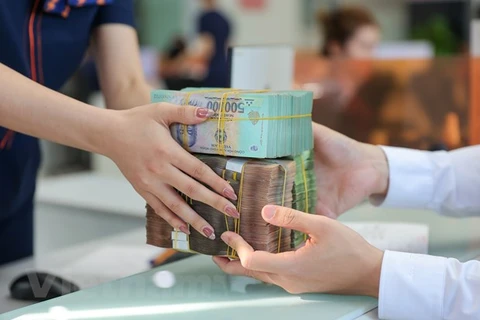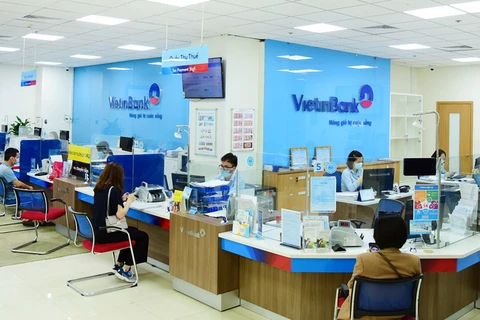 Experts said the Fed’s interest rate hikes will not affect exchange rates much. (Photo: VietnamPlus)
Experts said the Fed’s interest rate hikes will not affect exchange rates much. (Photo: VietnamPlus) Hanoi (VNA) – As expected, after a two-day meeting, the US Federal Reserve (Fed) has decided to raise its benchmark interest rate by 0.25% to between 5.25% and 5.5%, the highest level in 22 years.
This was the 11th consecutive rate hike since the Fed accelerated anti-inflation efforts in March last year. The move came just one month after the Fed suspended interest rate hikes to assess the US economic situation following the collapse of three major banks in the country this spring.
However, economists predicted the hike will have minimal effect on Vietnam’s economy.
Dr Vo Tri Thanh said the stabilisation of exchange rates in the current context is not a big concern.
He noted that recently, with the government’s oversight, exchange rates and the macro-economy remained stable in Vietnam. The State Bank of Vietnam (SBV) has eased the supply and demand of foreign currencies and foreign exchange reserves rose sharply, thus providing substantially favourable conditions for monetary policy and exchange rate governance for the foreseeable future.
In particular, the SBV added about 6 billion USD to the forex reserves in the first half of 2023, raising the total to some 93 billion USD. The International Monetary Fund (IMF) forecast the country’s forex reserves will reach 95 billion USD by the end of 2023.
Besides, Vietnam has continually been one of the 10 countries receiving the largest amount of overseas remittances. In 2022, the World Bank (WB) estimated Vietnam received 19 billion USD in remittances, up 5% from the previous year. In the first half of this year, Ho Chi Minh City alone recorded more than 4.3 billion USD in remittances, rising 37% year on year and equivalent to 65.6% of last year’s total, Thanh went on.
Dr Can Van Luc held that after the latest increase, the Fed will keep interest rates unchanged before gradually reducing them to 5% at the beginning of 2024 and 3% in 2025. Meanwhile, central banks in Europe are likely to lower interest rates to 3.75% by the end of 2024 and 3% in 2025.
In these forecasts, the US dollar will depreciate, while most of other currencies will appreciate again.
In that context, the Vietnamese dong’s value will lose just 0 - 0.5% compared to the US dollar in 2023. Next year, the fluctuation may be bigger but by just 0.5 - 1%, according to Luc.
Echoing the view, economist Dinh Trong Nghia said the SBV is out in front of the curve, predicting both the range and the timing of the Fed’s next interest rate increases, so Vietnam will respond in an active fashion.
“In spite of certain impacts, I think that the value of the Vietnamese dong will remain stable compared to the US dollar as it did with previous interest rate hikes. This is one of the reasons behind the forecast that domestic interest rates from now to the end of the year will remain stable, and even decline,” he noted.
Experts also said that theoretically, Vietnamese export companies will gain an advantage following the Fed’s rate hikes. However, it is a paradox that the US dollar appreciation also means consumers in the US and some countries will tighten their purse strings.
This will affect Vietnam’s exports, with possible decreases in overseas shipments of textile - garments and farm produce. Most recently, the cashew nut sector has proposed their export revenue target be lowered.
In addition, imports will become “more expensive”. Nevertheless, insiders said that the year-on-year decline of 18.2% in the H1 imports showed domestic production has not expanded and materials for production have not seen import increases. Given this, the impact of Fed’s rate hikes on imports may be inconsiderable at present.
There is also concern that the US dollar’s appreciation will lead to a shift in the USD investment flow to the US. However, Vietnam is still assessed as an attractive investment destination thanks to political stability, high economic growth potential, and a stable macro-economy. Therefore, the Fed rate increase will have minimal impact on Vietnam’s economic recovery./.


























